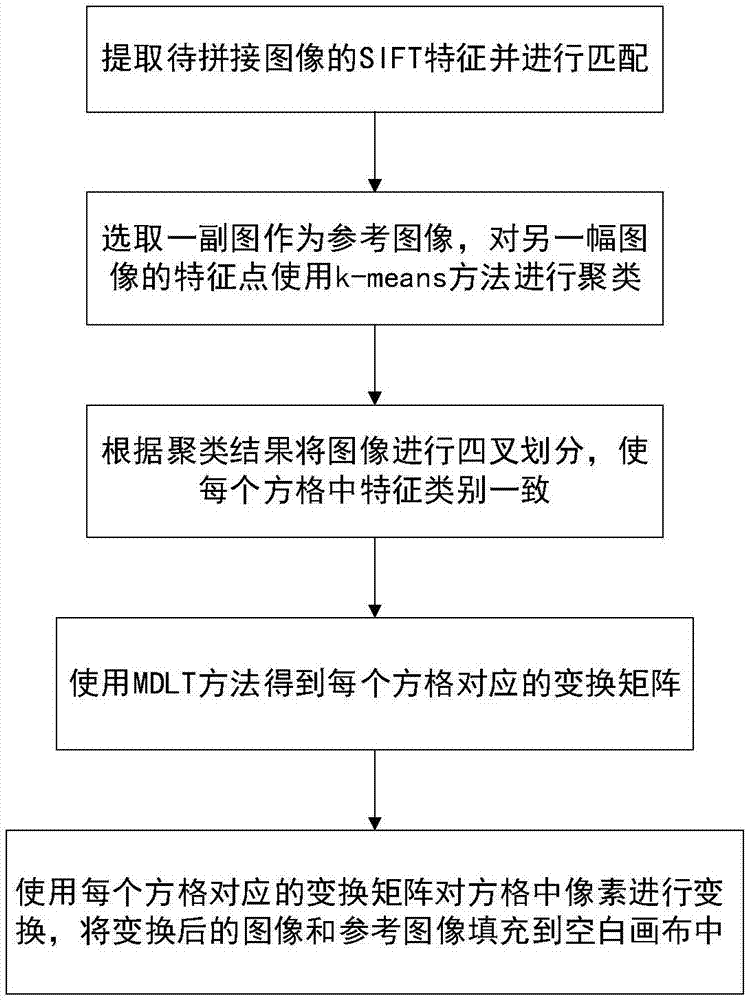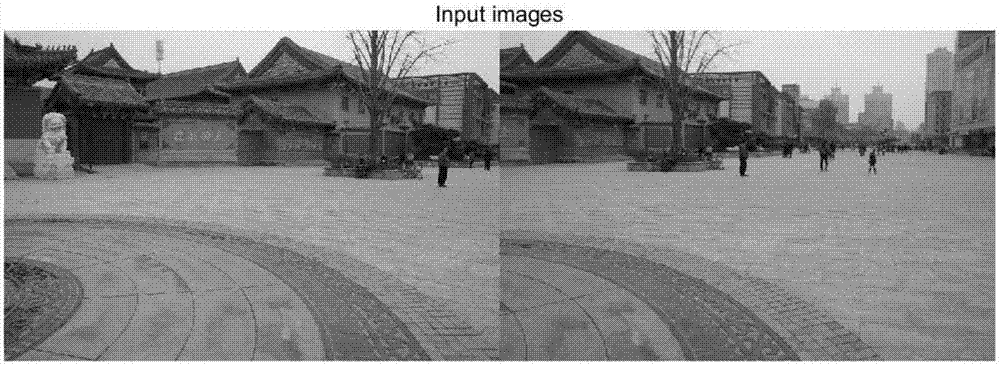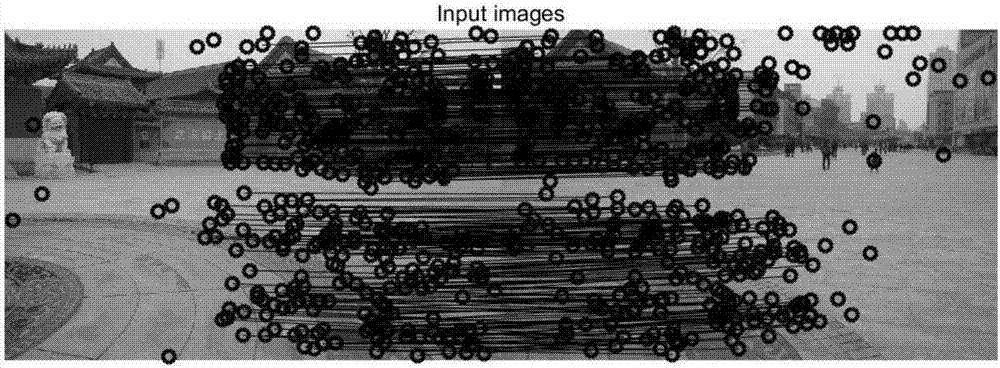Image splicing method based on feature point clustering four-fork division and local transformation matrixes
A technology of local transformation and image stitching, applied in the field of image processing and computer vision, it can solve problems such as misalignment, blurring, and difficulty in completely removing ghosts, and achieve the effect of reducing the number and improving computing efficiency.
- Summary
- Abstract
- Description
- Claims
- Application Information
AI Technical Summary
Problems solved by technology
Method used
Image
Examples
Embodiment Construction
[0037] The implementation of the present invention will be further described in detail below with reference to the accompanying drawings and embodiments.
[0038] An image mosaic method based on feature point clustering quadrangle division and local transformation matrix, such as figure 1 As shown, the specific steps are as follows:
[0039] Step 1, for the images to be spliced, extract the SIFT features of the two images and match them;
[0040] Obtain two images with a certain overlapping area to be spliced, which are respectively denoted as I 1 and I 2 ;Such as figure 2 As shown, the pixel size of the two images is 730×487, and both images contain certain depth information of non-planar scenes.
[0041] Extract the SIFT features of the two images, including the position, scale and direction of the feature points and the feature description operator, and match them according to their feature point characteristics and description operators to obtain a number of matching ...
PUM
 Login to View More
Login to View More Abstract
Description
Claims
Application Information
 Login to View More
Login to View More - R&D
- Intellectual Property
- Life Sciences
- Materials
- Tech Scout
- Unparalleled Data Quality
- Higher Quality Content
- 60% Fewer Hallucinations
Browse by: Latest US Patents, China's latest patents, Technical Efficacy Thesaurus, Application Domain, Technology Topic, Popular Technical Reports.
© 2025 PatSnap. All rights reserved.Legal|Privacy policy|Modern Slavery Act Transparency Statement|Sitemap|About US| Contact US: help@patsnap.com



